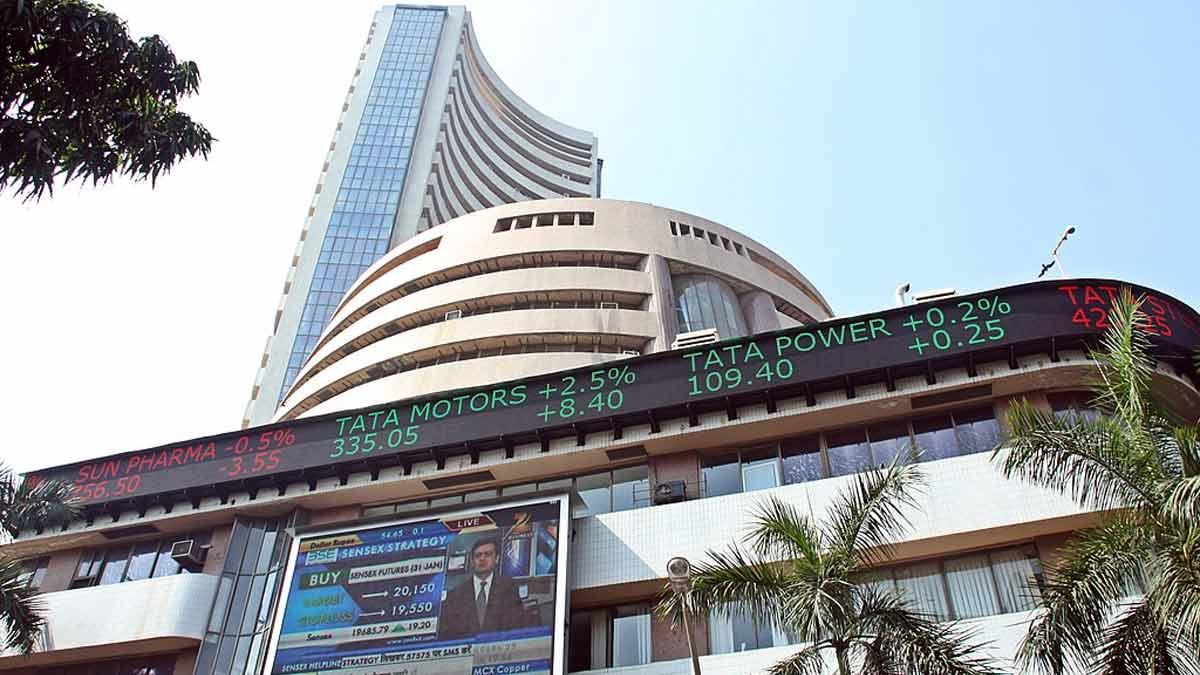Indian equities finished the week on a high, rising nearly 2% following the United States' decision to postpone tariff increases for all countries except China, which allayed fears of a global recession and brought back investor confidence, market analysts said on Saturday.
The benchmark Nifty 50 opened with a huge gap-up to almost its 20-day exponential moving average (DEMA) level of about 22,900. After trading in a small range, it eventually settled at 22,828.55.
Sectoral leaders were metal, energy, and pharma stocks, while the large-cap market indices reported a robust bounce back with a range of gains between 1.82% and 2.86%.
Ajit Mishra, Religare Broking's Senior Vice President of Research, said, "The continuous decline in the volatility index is good for the sustained recovery, though these sharp movements are tricky to navigate for the traders. A decisive move past 22,900 on the Nifty would pave the way for a retest of the 23,400 zone, which coincides with crucial moving averages.
The BSE Sensex jumped by 1,310.11 points, or 1.77%, to close at 75,157.26 on Friday. In intraday trade, it rose to a high of 75,467.33 and fell to a low of 74,762.84.
In the meantime, the Indian rupee also firmed up, ending a three-day losing streak. It gained 65 paise to close at 86.04 against the US dollar, supported by a weakening greenback, falling crude oil prices, and strong domestic equities.
Nandish Shah, HDFC Securities' Senior Analyst for Derivatives and Technical Research, said, "Market breadth firmly in favor of the bulls as advancers dominated decliners by a large margin. The advance-decline ratio on the BSE reached 3.68, its highest since March 5, 2025."
Global trade sentiment also propelled small- and mid-cap shares, which inched up approximately 2%. The optimism derives from hopes supply chain disruptions are likely to de-escalate, reducing costs of inputs to businesses.
But Abhishek Jaiswal, Fund Manager at Finavenue, cautioned: "Trade policy changes at regular intervals necessarily lead to market volatility. Export-dependent sectors might have to walk with caution. Nevertheless, I am optimistic about India's larger economic course, especially if lower cost pressures are able to kindle domestic spending and investment."
In the near term, analysts anticipate support for the Nifty at 22,600–22,700, with resistance likely at the 23,000–23,100 level.
The Bank Nifty reflected the overall bullishness. After opening higher, the index continued to rise and closed strongly at 51,002. Interestingly, it broke above the key resistance range of 50,750–50,800 and created a strong bullish candle on both the daily and weekly charts.
Hrishikesh Yedve, AVP of Technical and Derivatives Research at Asit C. Mehta Investment Interrmediates (A Pantomath Group Company), explained, "The level of 50,750 that we had mentioned as a potential breakout point is now going to act as a crucial support. As long as the Bank Nifty remains above this level, it can go up towards 51,500-52,000. A 'buy on dips' strategy is suggested in this scenario."
Read also| India's Forex Reserves Climb to $676.3 Billion, Marking Fifth Consecutive Weekly Gain
Read also| FIIs and DIIs Infuse Over $5 Billion into Indian Equities in March, Turning Net Buyers


















